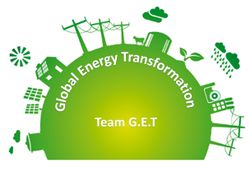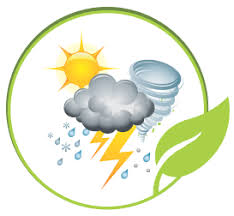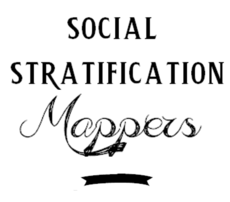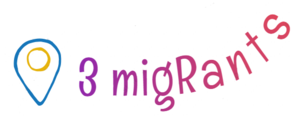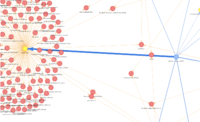Difference between revisions of "Project Groups"
| Line 292: | Line 292: | ||
'''Predictive Policing: The future can be seen'''<br> | '''Predictive Policing: The future can be seen'''<br> | ||
| − | Crime is an act punishable by law that has been timeless and has been committed practically since the start of time. Crime analysis is required to reveal the complexities of crime records. The ability to predict the future crimes based on the location, pattern and time can serve as a valuable source of knowledge for them either from strategic or tactical perspectives. This process will help the law enforcement in identifying potential hotspots and implementing crime prevention strategies To predict future crime accurately with a better performance, it is a challenging task because of the increasing numbers of crime in present days, and erratic activity patterns. Therefore, crime prediction method is important to identify the future crime and reduces the numbers | + | Crime is an act punishable by law that has been timeless and has been committed practically since the start of time. Crime analysis is required to reveal the complexities of crime records. The ability to predict the future crimes based on the location, pattern and time can serve as a valuable source of knowledge for them either from strategic or tactical perspectives. This process will help the law enforcement in identifying potential hotspots and implementing crime prevention strategies To predict future crime accurately with a better performance, it is a challenging task because of the increasing numbers of crime in present days, and erratic activity patterns. Therefore, crime prediction method is important to identify the future crime and reduces the crime numbers. |
For our analysis, we will be using the New York Police Department (NYPD) crime data for the City of New York. Through our analysis, we hope to provide a comprehensive overview of crime statistics in these 5 boroughs of New York City and illustrate the power of using this data for predictive policing for law enforcement agencies across the world. | For our analysis, we will be using the New York Police Department (NYPD) crime data for the City of New York. Through our analysis, we hope to provide a comprehensive overview of crime statistics in these 5 boroughs of New York City and illustrate the power of using this data for predictive policing for law enforcement agencies across the world. | ||
Revision as of 23:35, 15 June 2018
|
|
|
|
|
|
Project Groups
Please change Your Team name to your project topic and change student name to your own name
| Project Team | Project Title/Description | Project Artifacts | Project Member |
|---|---|---|---|
|
Project title: Provide eyes catching title. However, it should reflect the content or/and the focus of your project Abstract The abstract should not be more than 350 words. |
| ||
|
Cyber-security: you are in more danger than you can possibly imagine Cyber-attacks are becoming increasingly sophisticated. Coupled with the growing amount of data being generated by individuals, corporations and governments, well-orchestrated attacks could potentially cause major disruptions to any country, such as gaining access to national defense systems. According to David Koh, CEO of Singapore’s Cyber Security Agency, Singaporeans are largely aware of cybersecurity threats but do not take the necessary precautions, which may be due to complacency stemming from Singapore's reputation as a safe country1. Hence, public education is still required to urge individuals into taking preventive measures. This project will contribute to that end by providing interactive and interesting visulisations of cyber-attacks that can engage members of the public. 1https://govinsider.asia/innovation/cyber-war-csa-singapore-david-koh/
|
| ||
|
Analyzing World Energy Production & Consumption For 66 years, the BP Statistical Review of World Energy has provided high-quality objective and globally consistent data on world energy markets. The review is one of the most widely respected and authoritative publications in the field of energy economics, used for reference by the media, academia, world governments and energy companies. A new edition is published every June. Join us as we explore the rich data-set provided by BP & explore trends in energy production and consumption across countries through time. |
| ||
|
Project title Abstract |
| ||
|
Water For Life: An Analysis of Changing Rainfall Patterns Across India Through Visualizations
In this study, we intend to analyse India’s rainfall patterns for past few years using Exploratory techniques. Over 80% of the annual rainfall is received in the four rainy months of June to September. There is great regional and temporal variation in the distribution of rainfall and although the monsoons affect most parts of India, the amount of rainfall varies from heavy to scanty on different parts. The primary motive of our analysis is to scrutinize the effect of irregularities in the rainfall pattern on crop yield in agriculture sector in India and in turn attempt to discover any relation between the growing rate of suicides amongst farmers. Through our visualizations, we would like to derive meaningful insights that foster our understanding about how climactic changes have an influence on various factors including socioeconomic factors that might lead to these suicidal attempts.
|
| ||
|
Exploring Inequality’s Geographic Dimension Across Neighbourhoods in Singapore: Its Driving Forces & Touch Points Amidst the recent debate over growing social inequality in Singapore such as the distinct clustering of elite schools and varying access to resources, the dangers of hardening social mobility can pose as a threat for a culturally diverse nation that has upheld its values of social cohesion and racial harmony. In bonding and bridging communities, Singapore has put in place various programmes in the community and schools to nurture shared experiences and promote inter-communities mixing. More recently, inequality was highlighted to have a geographic dimension even for a densely populated city like Singapore. Using geospatial techniques in R, the dashboard serves to visualise whether geography is an important driver of inequality, by mapping the extent of social inequality and access to common spaces across neighbourhoods. This will be done via three approaches. First, we will analyse whether there exist clusters that could point towards social inequality and whether this is more pronounced in certain neighbourhoods, based on ethnic mix, age composition, and housing type. This will be done using choropleth mapping, spatial segregation index, and spatial points pattern analysis at both the subzone and dwelling unit level. Next, using the Hansen Accessibility Model, we will map out the available touch points within neighbourhoods that could facilitate social mixing, such as the ease of access to common spaces, amenities and opportunities for choice of education. This is because an important aspect of social inequality is having reasonably fair access to different resources. Lastly, by identifying centroids, we will move into solutioning and explore possible spaces such as vacant state land where upcoming public amenities can be best placed to optimise social class mixing. |
| ||
|
Buy More! – Maximizing Sales Taking advantage of data is key to ensuring the survival of an e-commerce retail business. Through the visualization of the spending habits of customers and the visualization of the results from various machine learning algorithms, insights can be gathered as to which customers the retailer should target and what type of products should be kept in-stock to maximize sales. |
| ||
|
Make the Last Mile Count - Visualizing eCommerce orders to improve product distribution network and reduce delays E-commerce represented 54% of U.S. sales in the third quarter for TV and web merchant QVC.com. QVC is one of the most successful TV shopping broadcasters worldwide, which is one of eight leading retail brands under the Qurate Retail Group, focuses on building customer relationship, to engage with them to discover a dynamic catalogue of products from a wide range of categories. QVC is committed to providing its customers with thousands of the most innovative and contemporary beauty, fashion, jewellery and home products. Customers are engaged via multiple channels, through social media like Facebook Live, proprietary platforms that focuses on specific product types and video commerce based on QVC’s television channel. To stay competitive in this high-paced industry, QVC has to deliver the right products to the right person and the right time. First, we will visualize the network between warehouses and consumers to give an overview of the existing business. Then, we will identify if there are geographical gaps between existing product distributions and actual consumer demand by plotting proportional symbol maps of warehouse supply and consumer demand. Geospatial analysis of demand by product categories may uncover insights on which groups of products should be stocked together to maximise profits from customers. Lastly, we will perform time-series analysis to identify seasonality (if any) in customer demand. Through our web application, we aim to provide insights that could aid business users in planning and decision-making in the following aspects in inventory management, manpower planning and procurement planning. |
| ||
|
Project title Abstract |
| ||
|
Project title Abstract |
| ||
|
Global Migration - Higher Walls or Wider Doors? With the world shrinking by the day with technology and humans being more than ever ready to scale distances in quests to follow a career path or to escape political persecution and war or in search of better quality of life or to be closer to family or friends, Migration and the resulting ethnic and racial diversity are amongst the most emotive subjects in contemporary societies. In recent times, the political salience of migration has strongly increased due to uproar of natives and other factors. For origin societies, the departure of people raises concern about the 'brain drain' on the one hand. For receiving societies, the settlement of migrant groups and the formation of ethnic minorities can fundamentally change the social, cultural, economic dimensions and cause lack of resources for the natives. Using R’s geospatial and network analysis techniques, we aim to delve into the migrant numbers data over the years from country to country conjoined with the remittances according to the world bank by them to the origin locations. Migration and remittance numbers will be analysed grouping the locations on continent, region and socio-economic status scales to identify relations between the factors separating the dominating and the dominated societies. This will be done using visual models employing quadrant analysis to visualize how the numbers have changed over the years due to varying push and pull factors according to the current world situations, flow mapping and creating a betweenness clustering and centrality index network model to solution the question on the profitability of migration from the eyes of the origin and destination societies. |
| ||
|
Predictive Policing: The future can be seen Crime is an act punishable by law that has been timeless and has been committed practically since the start of time. Crime analysis is required to reveal the complexities of crime records. The ability to predict the future crimes based on the location, pattern and time can serve as a valuable source of knowledge for them either from strategic or tactical perspectives. This process will help the law enforcement in identifying potential hotspots and implementing crime prevention strategies To predict future crime accurately with a better performance, it is a challenging task because of the increasing numbers of crime in present days, and erratic activity patterns. Therefore, crime prediction method is important to identify the future crime and reduces the crime numbers. For our analysis, we will be using the New York Police Department (NYPD) crime data for the City of New York. Through our analysis, we hope to provide a comprehensive overview of crime statistics in these 5 boroughs of New York City and illustrate the power of using this data for predictive policing for law enforcement agencies across the world.
|
| ||
|
*Have the Nations really progressed? Abstract |
| ||
|
Project title Abstract |
| ||
|
Project title Abstract |
| ||
|
Project title Abstract |
| ||
|
Project title Abstract |
| ||
|
GeBiz: Who supplies to the needs of Singapore? Government Procurement is the procurement of goods and services on behalf of a public authority. As per policy, the procurements need to be done through an issue of public Tenders to prevent corruption, wastage, and local protectionism. GeBiz is the Singapore government's one stop portal for the above purpose. The data of past procurements are made available for the public in the Data.gov.sg portal. It is difficult to identify bias in such data available that have multiple transactions. Since a transaction involves various levels of the government, the bias may not be obvious while looking at the issuing authority and the supplier alone. We propose an approach which combines network analysis, association analysis, and visual analytics to make this process easier. Traditionally, Association analysis has been used to identify relations between products purchased together. It is also applicable to any data that follows the format of multiple entities and a common transaction that links them together. In our case, the entities involved are the issuing agency and the supplier. The current visualizations treat all entities involved to be of the same category, thus making the visualization less intuitive. We want to come up with a visualization that can overcome this limitation. |
| ||
|
Project title Abstract |
| ||
|
Project title Abstract |
| ||
|
Project title Abstract |
| ||
|
Project title Abstract |
| ||
|
Project title Abstract |
| ||
|
Project title Abstract |
| ||
|
Project title Abstract |
| ||
|
Project title Abstract |
| ||
|
Project title Abstract |
| ||
|
Project title Abstract |
|


